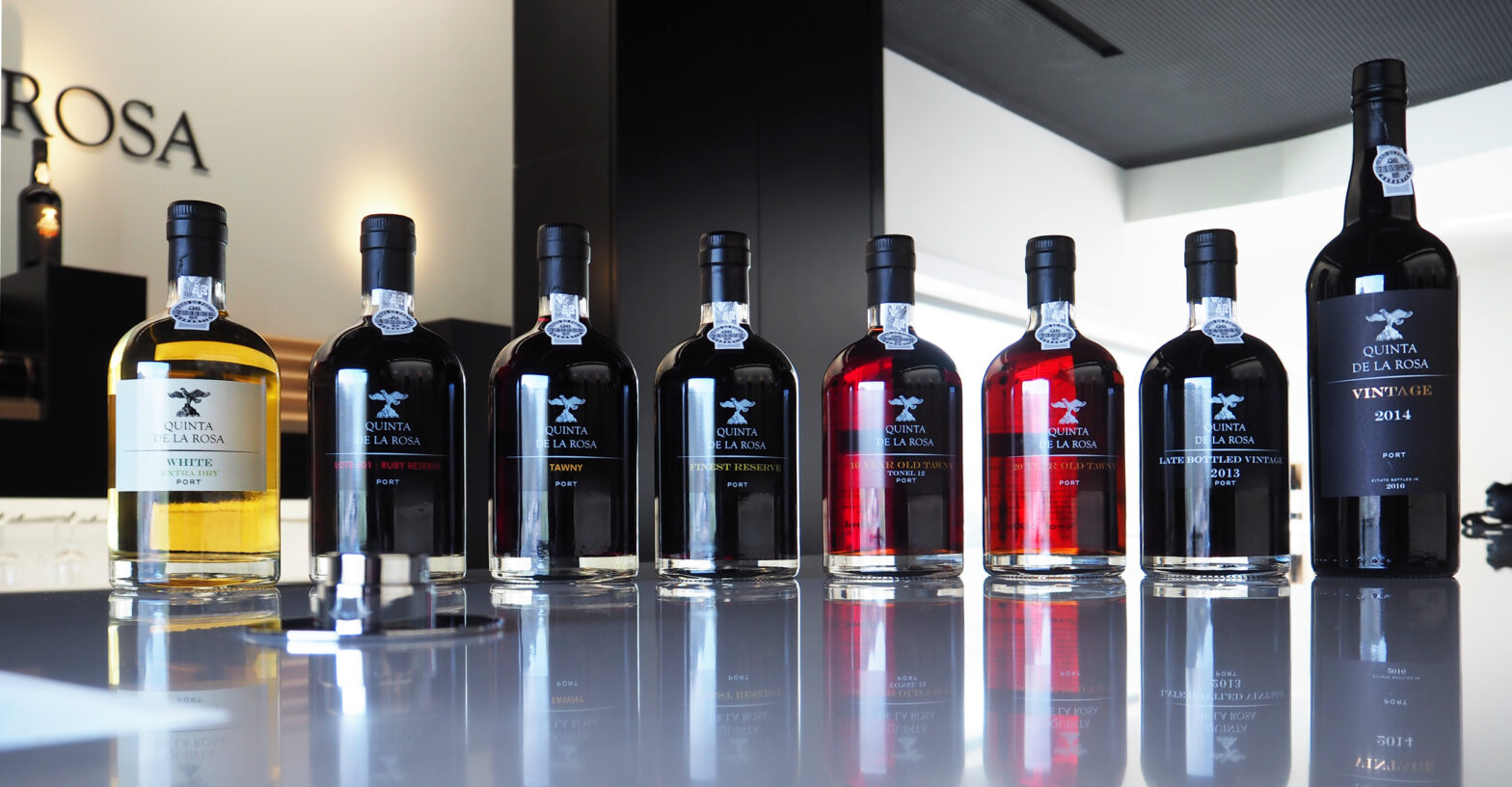Port Wine (also known as Vinho do Porto, Oporto, Porto, and Port) is a sweet Portuguese, fortified wine from the Douro Valley in the northern provinces of Portugal. It is often served as a dessert wine. Wines in the style of the Portuguese product called Port are produced around the world in several countries - most notably Australia, South Africa, India, Canada and the USA. However, under European Union guidelines (and Canada), only the wine product from Portugal may be labeled as Port. In the USA, Federal law mandates that the Portuguese-made product be labeled Porto or Vinho do Porto.
Port is produced from hand-picked indigenous grapes, which are grown along steep stone terraces (consisting of schist and granite) and processed in the Douro wine region. The wine produced is then fortified with the addition of distilled grape spirit (at a strength of 77% alcohol) in order to stop the fermentation and leaving some residual, natural berry sugars in the wine and to lift the alcohol content between 19 - 22% Alc./vol.
The following spring, the wines are traditionally transported down to Villa Nova de Gaia (across from Porto) where they are then stored and aged for each unique style. Typically maturing in oak barrels (small & large) and stored in caves (Portuguese meaning 'cellars'), before being carefully blended to the 'House Style' and bottled.
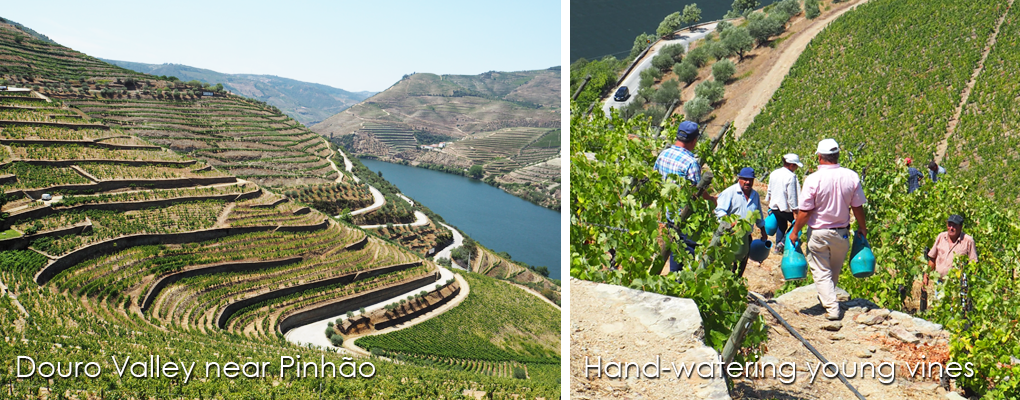
The wine received its name 'Port' in the latter half of the 17th century from the seaport city of Porto at the mouth of the Douro River, where much of the product was brought to market or for export to other countries in Europe from the Leixões docks. The Douro Valley where Port wine is produced was demarcated / defined and established as a protected wine region or appellation in 1756 - making it the third oldest defined and protected wine area in the world.
Grapes used to make Port Wines:
• Red Ports can be made from many types of grapes, but the main ones are Tinta Barroca, Tinta Cão, Tinta Roriz (Tempranillo), Touriga Franca (previously named, and still called by some Touriga Francesa), and Touriga Nacional.
• White Port is produced the same way as red Ports, except that they use white grapes - Esgana-Cao, Folgasao, Malvasia, Rabigato, Verdelho, and Viosinho.
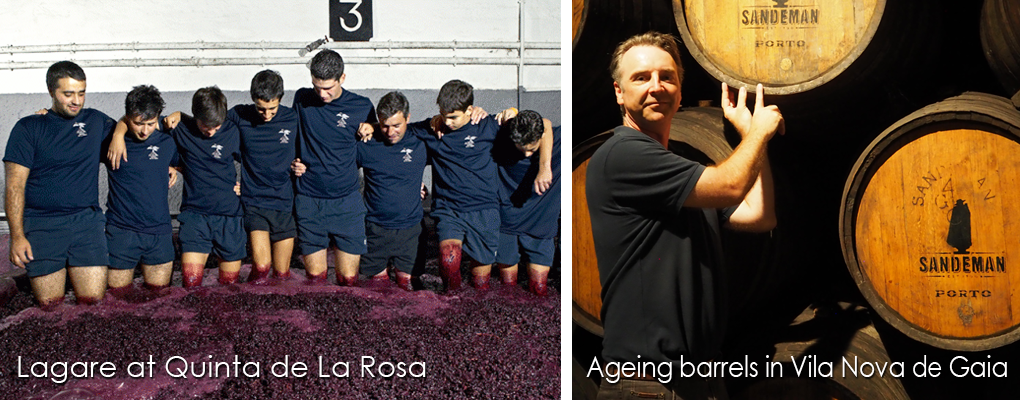
Styles of PORT:
• White Port NV: After fermentation White Port is aged for a short time in neutral oak casks or stainless stank tanks, before it is blended and then bottled. The taste can vary from dry to slightly sweet in flavour.
• Ruby Port NV: Ruby Port has an *average age of 2 years, aged in large oak vats prior to being blended and then bottled. It has a rich red colour and a vibrant, red berry & stone-fruit flavour profile.
• Tawny Port NV - *(+ Aged Tawny Ports): Tawny Port is aged for a minimum of 2 years in the smaller oak casks - before being blended to the 'house-style' and then bottled. It has a deep mahogany/tawny colour and a combination for dark fruits & mixed nut taste. Aged Tawny Port is usually aged for 10, 20 or 30 years but some of the more expensive ones have been aged for more than 40 years. *NB: The year on the label is the average age of the wine in the bottle.
• Crusted Port: Crusted Port is a Ruby Port that is aged for about 3 years in cask and then finishes the aging process in the bottle. It is a blend of grapes from several different years and it is not filtered before being bottled which is why it will have sediment in the bottle.
• Colheita Port: A single 'vintage-dated' Tawny Port, (all grapes come from one year’s harvest) - *(but not a declared vintage year) - they are then aged in small used oak barrels for a varied number of years (with some up to 50+ years). In Portuguese the word ‘Colheita’ means ‘harvest’ - during this extended time in cask the Port takes on flavours of dried fruits, nuts and exotic spices, while becoming very smooth and complex as they age.
• Late Bottled Vintage (LBV) Port: Over time this style has become two distinct styles of wine, both of them bottled between 4 - 6 years after the vintage, but one style is fined & filtered before bottling, while the other is not.
• Reserve Port or Vintage Character: Reserve Port is a premium Ruby Port - it has no single vintage (usually being a blend of several vintages 6-8 years of age of Ruby Port) nor the typical character of Vintage Port.
• Vintage Port: Vintage Port is aged in oak barrels for approximately 18 - 22 months prior to being bottled and then it is allowed to age for ten to forty years in the bottle. It is one of the most sought after wines in the world and can be one of the most expensive.
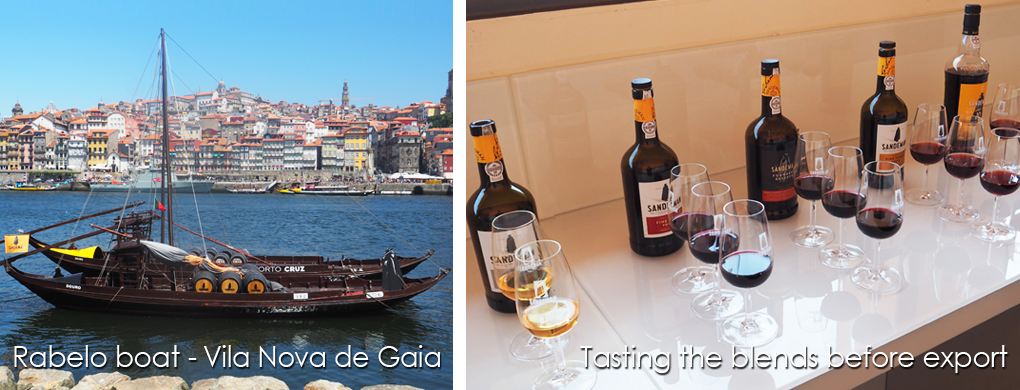
Lagare:
The Lagare is an open shallow granite or concrete vat, perhaps one meter deep and several metres square. After the grapes are picked during the day, they are spread across the bottom of the Lagare until they reach a depth of about knee-height. Each Lagare contains a large drain connected directly to the fermentation vats and all are filled with the grapes every harvest day. Treading is taken very seriously as it is this process which lends Quinta de la Rosa wine a very special quality.
The local pickers, many of whom spent the day hauling the same grapes up and down the mountainside, bare footed and bare legged, clad in T-shirts and shorts, climb carefully into the open vat of freshly picked grapes.
The individuals in each team link arms or place arms around each other's shoulders, thus, forming a continuous treading line. One designated individual quite loudly begins to call the treading rhythm, as he does so the left and then right leg of each of the individuals rises and falls in unison compressing the fruit with the bare soles of their feet.
The team continue relentlessly on for two full hours without a break. Once this first stage known as the 'Military' is completed, a further one hour of 'free' treading follows, this usually occurs at night, and often to the accompanied by music and singing.
The end result (other than a number of purple workers legs) resembles nothing more than a port-filled stone tub. The naked human foot is actually ideal in that it applies just enough pressure to crush the grapes, but at the same time is soft enough to avoid shattering, crushing any of the grape seeds, releasing acids and bitter flavours into the juice (a common flaw of more modern mechanical presses).
While foot-treading is unusual, it is the fermentation process - or more accurately the practice of what might be called 'fermentus interruptus' - that makes port unique. This unnatural technique dates back nearly 300 years.
Though not unique to Quinta de la Rosa - only a handful of properties in the Douro Valley still maintain this labour intensive tradition of foot treading.
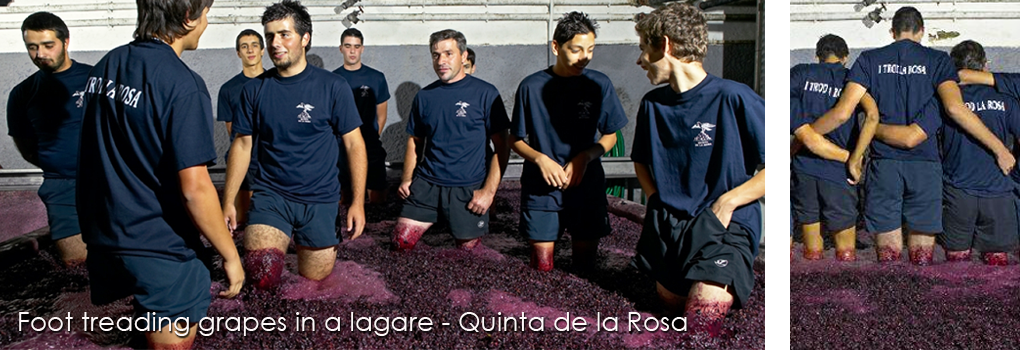
Quinta:
So what does Quinta mean? In Portuguese Quinta is a country house (farm) with a small plot of land, where fruit, vegetables and or grape vines are often cultivated.
So how are Quinta's (vineyards) classified?
In the Douro Valley wine region - vineyards are graded on a scale A to F - with A being the Top. This grading system was initially considered in about 1755 - but was not initiated until after the formation of the Casa do Douro in 1932. Its objective was to promote the production of higher quality wines and to undertake a 'Registration of Property'. The survey was commenced in 1937 and completed in 1945.
There are up to 12 qualities that a vineyard is measured on:
• Location + Aspect
• Altitude + Gradient
• Nature of land + Soil
• Age of Vines + Vine Density
• Micro-Climate + Vine Varietals
• Productivity + Vineyard Maintenance
With each of these qualities being awarded points and the total points gained dictates the grading of A - F.
Port wine is grown and made on these Quinta's in the demarcated region of northern Portugal. The total demarcated area covers approximately 250,000 hectares and stretches from 100km's inland from Porto along the Douro River to the Spanish border. The Port growing region (which is currently around 46,000 hectares of planted vines) is divided into 3 specific areas, each with their own unique meso-climates; the Baixo Corgo, Alto Douro or (Cima Corgo) and the Douro Superior.
In the past, there were many grape varietals used in these Quinta's in the Douro region, and farmers chose the grapes that in their opinion were better suited to their particular vineyard site. Nowadays there are stricter controls aimed at improving overall wine quality.
There are 6 recognized top indigenous grape varietals, plus certain additional approved ones. The top 6 grape varietals include: Touriga Nacional, Tinta Cão, Tinta Roriz, Tinta Barroca, Touriga Franca and Tinta Amarela - *(plus nearly 100 more local varietals).

